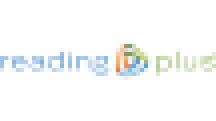When the 3rd, 4th, and 5th graders at Golden Grove Elementary School in Palm Beach County, FL pad around the classroom in their (possibly) smelly socks, everyone cheers. It’s not because these students and teachers have a peculiar penchant for fetid footsies. Rather, Stinky Feet Day is the students’ hard-earned reward for reaching new benchmarks in silent reading. Silent reading is sometimes referred to as the “other fluency,” with oral fluency being the traditional standard-bearer. Yet, silent reading is a critical, albeit often overlooked, aspect of literacy development.
Linda Edgecomb is the principal of Golden Grove Elementary and a huge fan of Stinky Feet Day. (Also credit Edgecomb’s intermediate ELA teachers with introducing Flashlight Reading periods when kids quietly read by flashlight in a darkened classroom.) Her desire to incentivize and reward students for their reading diligence was born out of a deep concern for some alarming English Language Arts (ELA) numbers: In 2018, when she became the principal, the lowest-performing 25% of her 3rd, 4th, and 5th graders reached only 46% of their expected yearly growth based on statewide assessments.
“I knew we couldn’t stay there,” says Edgecomb, referring to the dismal ELA numbers including the Proportion of a Year’s Growth (PYG). This assessment, which measures the amount of progress a student makes between two points in time, ideally falls between 1.5 and 2.0. In 2018, Golden Grove’s Hispanic students’ PYG average was 1.17; for ESE (i.e., special education) students, it was only 1.12.
Edgecomb was concerned. “Silent reading is a critical skill for students to develop, but it can be hard to accurately gauge how every learner is progressing. It’s easy to look like you’re reading when, really, you’re struggling to understand the text. Kids can get lost because they don’t have the right book or they’re reluctant to speak up when everyone around them is so quiet. They may be too intimidated to say, ‘I need help.’”

National studies bear out Edgecomb’s insights. A groundbreaking 2016 study, underwritten by Reading Plus, an adaptive literacy intervention platform, found that contemporary silent readers are significantly less efficient than their counterparts from 1960—and the researchers suggested a direct link to the decline in the overall amount of time students spend reading.
Dr. Kristin Gehsmann explains the nuances of these findings. Gehsmann, who is professor and chair at the Department of Literacy Studies, English Education, and History Education at East Carolina University in Greenville, NC, says efficiency is one important piece of the silent reading and literacy development puzzle. “Reading efficiency is about reading accurately, at an appropriate rate, and with prosody, which means reading with expression and awareness of the intended meaning of the text,” says Gehsmann, who co-authored a textbook about the developmental approach to teaching reading and writing and serves as a content-area specialist for Reading Plus. “Directly related to efficiency is proficiency, which means the ability to read for meaning.”
Historically, educators have assessed readers based on how quickly they read. Equating speed with fluency, Gehsmann explains, is a mistake. “Most effective readers vary their rate based on purpose,” she says. “Further, reading fluently means that you can read accurately and with expression, react to punctuation or special text features, and adjust your volume and rate in response to the meaning of the text. Oral fluency can help silent readers develop the skills necessary to become more efficient and proficient, but that alone is not enough. Once students have acquired sufficient word knowledge such that they can readily identify 150 or more words on sight, they must spend a great deal of their time reading silently. ”
Developing the skills and stamina for efficient, proficient silent reading is crucial for success well beyond the classroom. Gehsmann says in today’s knowledge economy, literacy is a basic requirement for getting and keeping a stable job in just about every industry. What’s more, “reading is a gateway to other learning,” she says. “Reading helps you explore and think critically about topics and ideas you are concerned about—the key to advancing social justice and the health and vitality of our entire democracy.” Besides, adds Gehsmann, “reading is a wonderful source of pleasure and enjoyment.”
Gehsmann points to a study that found kids in the 98th percentile who read for an average of one hour per day outside of school are exposed to 4,733,000 words a year. Students in the 10th percentile who average just one minute of non-school reading each day are exposed to 51,000 extra words annually. If word consumption can affect everything from personal job security to the building blocks of our society, developing strong silent readers is profoundly important.
Cue Reading Plus. Remarkably, the Vermont-based company has been a leader in the field of literacy for nearly 100 years. In the 1930s, founders and brothers Earl, James, and Carl Taylor pioneered research and inventions designed to advance reading fluency by tracking eye movements. Today, Earl’s grandson, Mark, leads the Reading Plus charge. Staying true to the founding mission, the company uses advanced technology and cutting edge tools to build its interactive diagnostic platform for assessing, instructing, and even motivating ELA students.
In 2018, back at Golden Grove Elementary, Edgecomb introduced technology that enabled scaffolded reading instruction to help her 3rd- to 5th-grade students improve their reading behaviors and boost their silent-reading stamina. She also knew her teachers needed to be fully behind any effort to augment traditional ELA teaching with an adaptive online program. With Reading Plus, she succeeded on both fronts.

“Our kids like working with a reading platform that meets them where they are, not where they should be,” says Edgecomb. “They are excited to track their own progress in real-time and to choose from a wide range of books. And they are really motivated by the challenge of “leveling up” or unlocking the next lesson.” (At Golden Grove Elementary, such silent reading prowess is rewarded with a Disneyland-like “fast pass” that lets kids go to the front of the line at school.)

Learn how to find the right reading intervention for your school at our Oct 23rd webinar.
Sign up and get actionable tips from administrators, educators, and experts.
What about the teachers themselves? “They can easily identify problem areas and work individually or in small groups to monitor and coach students,” explains Edgecomb. “For silent reading, in particular, it’s so valuable for teachers to see exactly how children are reading, such as whether they rushed through a passage or repeatedly went back and forth between certain words. We’ve found using an online reading program helps teachers be more efficient and effective in the classroom.”
The numbers are equally positive—and persuasive. Remember Golden Grove’s 2018 ELA achievement rate for the lowest 25% of students? In one year, the rate for those 53 students jumped from 46% to 65%. In the same timeframe, the Proportion of a Year’s Growth for Hispanic students rose from 1.17 to 1.42, and ESE learners’ PYG of 1.12 has increased to 1.74. Additionally, across grades 3-5—including those in the lowest 25%—the overall ELA proficiency has increased from 64% in 2018 to 72% (based on the latest 2019 data).

This upward trend has convinced Principal Linda Edgecomb that today’s students need an integrated, adaptive approach to learning this important “other fluency.” “Silent reading makes kids better prepared for problem-solving and complex thinking,” says Edgecomb. “It creates empathy and helps us see the world through different lenses. Plus,” she adds, “reading keeps life interesting.”
Dr. Kristin Gehsmann’s go-to resources
Books
- Teaching Reading and Writing: The Developmental Approach by Drs. Shane Templeton and Kristin Gehsmann. The definitive resource on literacy development and developmentally responsive literacy instruction, PreK-8!
- Developing Word Recognition by Drs. Kevin Flanagan and Latisha Hayes. A helpful resource for primary grade teachers working to develop their students’ word recognition and fluency skills.
- Reader, Come Home: The Reading Brain in the Digital Age by Dr. Maryanne Wolf. A provocative book about the impact of digital literacies implications for literacy instruction.
Periodicals:
- The Reading Teacher—A monthly, peer-reviewed publication for K-6 teachers of reading.
- Reading Research Quarterly—A peer-reviewed, international research publication focused on literacy, broadly defined, across all grades and ages.
Websites:
- ReadWriteThink—A joint venture of the International Literacy Association and the National Council of Teachers of English, this site includes resources and sample lesson plans for all aspects of reading and language arts instruction.
- Text Project—A website to support teachers and scholars interested in learning about research-based best practices with a special focus on text complexity, reading fluency, and comprehension.
- Reading Rockets—A PBS-affiliated website focused on supporting parents and educators who are interested in launching young readers.



